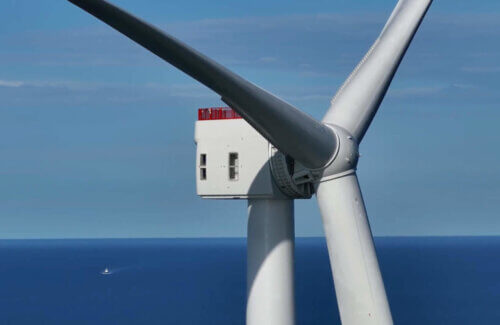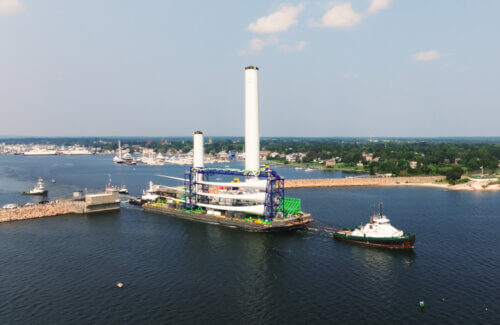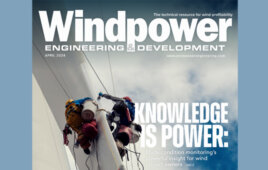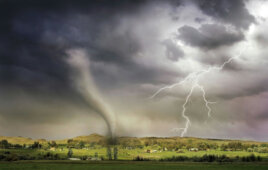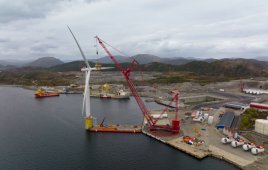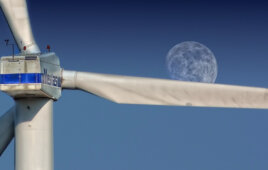Recent news of offshore wind turbine projects in New England waters shows that there is renewed interest in this water-bound source of wind power.
Although the United States has been slower to adopt offshore wind energy — the European and Asian markets already boast more than 10,000 offshore wind turbines — it is encouraging to note the commencement of three offshore wind projects, as these initiatives represent meaningful strides toward achieving a sustainable and clean future.
Why the growth of offshore wind?
The advantages of offshore wind power, compared to land-based projects, are becoming more compelling. Some of the reasons are:
- The wind resource is often stronger and more reliable than on land, and tiny differences in the wind resource can mean a big difference in a turbine’s generating effectiveness.
- Less potential for impacts on avian species and other wildlife in certain geographies, so there may be fewer regulatory hurdles.
- Sound and visual implications of offshore wind projects are fewer, so there may be fewer stakeholder relations issues.
- Less risk that topographical features will disrupt the wind resource.
- Fewer restrictions on height of towers and length of blades.
And increasingly, offshore wind is not confined to shallow waters. Floating wind is becoming more practical, with installations in the North Sea and other parts of the world seeking even stronger and more reliable winds further offshore. Assurance and risk management consultancy DNV says that floating offshore wind capacity is projected to reach almost 270 GW by 2050, as per its 2023 Energy Transition Outlook research.
We’re now seeing greater interest in offshore wind combined with other forms of renewable energy such as solar power arrays. There’s also interest in offshore wind being used to generate hydrogen fuel from seawater, with the gas pipelined to shore. There’s talk of using offshore wind turbines to capture carbon dioxide from the atmosphere and sequester it deep into suitable rock formations.
Transmission issues
During my 14 years at the Bureau of Ocean Energy Management (BOEM), I could see that one of the biggest challenges facing the development of offshore wind had to do with transmitting the power to shore. Much of this has to do with striking a balance between bringing this clean, renewable energy to customers while also protecting the aquatic environment from risks brought by undersea transmission cables.
I can think of a few planned offshore wind projects that didn’t go ahead — the proponents allowed their power purchase agreements (PPAs) to lapse — largely because of the transmission issue, inflation and overall increase to costs.
Regulatory issues: new but old
Although there may be fewer regulatory issues for wind developers when they step into the water, that’s not the same as there being no concerns.
Those issues can be more challenging to navigate than on land, simply because wind power project development in the water is a recent change for many regulatory agencies. There’s a learning curve for everyone.
Some of those situations deal with whether it’s state or federal waters being discussed. States have jurisdiction to varying extents into the water, beyond which federal jurisdiction takes over.
What may make offshore development easier is that several states are accustomed to the permitting process for oil and gas offshore development. This includes the concept of lease blocks being sold at auction, the environmental and social review process, and even the need to carry the energy from where it is sourced offshore, to land. Whether it’s about laying an undersea pipeline or an underwater electrical cable, the impacts are similar and so much of the regulatory environment is similar.
This includes the need to protect the undersea environment from harm, including protection for fish and their spawning grounds. It’s important to determine whether there are any species at risk involved, one of the most sensitive areas often being the near-shore and shoreline environment. Sometimes it may be necessary to plan a route around a sensitive area such as a fish-spawning grounds — bearing in mind that a non-direct route will increase costs, as well as power attenuation losses.
In the permitting process, after the project promoter has received rights to a parcel of seafloor, their first step is to prepare a site assessment plan. This covers matters such as a geological and geophysical survey, a search for environmentally sensitive areas, and a check for historic resources such as shipwrecks. This process is coordinated by BOEM. If the site assessment indicates no major areas of concern, BOEM will request a construction and operations plan, to include information such as the type and location of turbines, undersea facilities such as anchors and cables, as well as electrical conduits to carry the power generated to shore.
Experience has found this can take up to five years — two for the site assessment plan, and three more for the construction and operations plan review.
Finding a solution to stakeholder priorities
In the offshore, there may be a wide range of stakeholders, including:
Military – The U.S. Navy and Coast Guard may have concerns about the location of wind turbines and will need to be brought into considerations early in the process. The military may have requirements on turbine location, as it relates to aircraft taking off and landing at coastal military bases, and training airspace.
Harbors and shipping – These interests are concerned about free and safe navigation and will want existing shipping fairways left clear for navigation.
Fishing industry – This sector may be concerned about damage to their fishery resource, restricted access to fishing grounds, risk to spawning grounds and potential damage that their nets and the undersea infrastructure may do to each other.
Indigenous groups – Many Indian tribes and individuals feel they have been treated as a box to be checked and have not been adequately consulted about offshore development. In many cases, ocean views have a strong spiritual value, and they want those preserved. Having a robust tribal engagement plan is important. Many Indigenous tribes want to move beyond consultation to becoming a partner in the development process.
Individual property owners and tourism promoters – Unspoiled views over the water are a big attraction for many people, and the prospect of having that view filled with wind turbines can result in many angry calls to political representatives. In some situations where offshore drilling and production platforms are a familiar sight, there may be less opposition to offshore wind power development.
New developments in transmission permitting
As offshore wind power becomes more common in the United States, many of these issues will become better understood. We expect that more jurisdictions will streamline their processes as New Zealand has done, where one agency handles most of the consultative process.
Wind developers could also team up to use a common corridor for their underwater transmission lines — corridors that have already been approved for use, and adding more underwater facilities will be less of an issue for regulators and other stakeholders.
From a slow start, offshore wind power in the United States has a bright future. Much of the country’s population and power markets are along the coast, so having renewable energy sources located just a few miles offshore will help power a more renewable future.
 Tershara Matthews is the U.S. offshore wind policy lead for WSP USA. She develops a variety of offshore energy, restoration, infrastructure and other environmental projects while promoting strong regulatory and stakeholder outreach with a business development emphasis on offshore wind and energy transition. She has a specific focus on offshore wind initiatives in the Gulf Coast. Matthews previously served as a supervisory program management specialist for the Bureau of Ocean Energy Management (BOEM) office in New Orleans, as well as a former senior leader with the BOEM office in the Gulf of Mexico. Matthews is a graduate of Xavier University of Louisiana with a bachelor’s degree and the University of Southern Mississippi with a master’s degree in public health. She is based in WSP’s New Orleans office.
Tershara Matthews is the U.S. offshore wind policy lead for WSP USA. She develops a variety of offshore energy, restoration, infrastructure and other environmental projects while promoting strong regulatory and stakeholder outreach with a business development emphasis on offshore wind and energy transition. She has a specific focus on offshore wind initiatives in the Gulf Coast. Matthews previously served as a supervisory program management specialist for the Bureau of Ocean Energy Management (BOEM) office in New Orleans, as well as a former senior leader with the BOEM office in the Gulf of Mexico. Matthews is a graduate of Xavier University of Louisiana with a bachelor’s degree and the University of Southern Mississippi with a master’s degree in public health. She is based in WSP’s New Orleans office.
Filed Under: Featured

